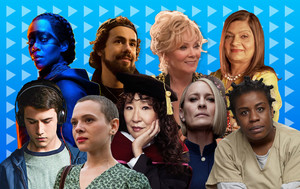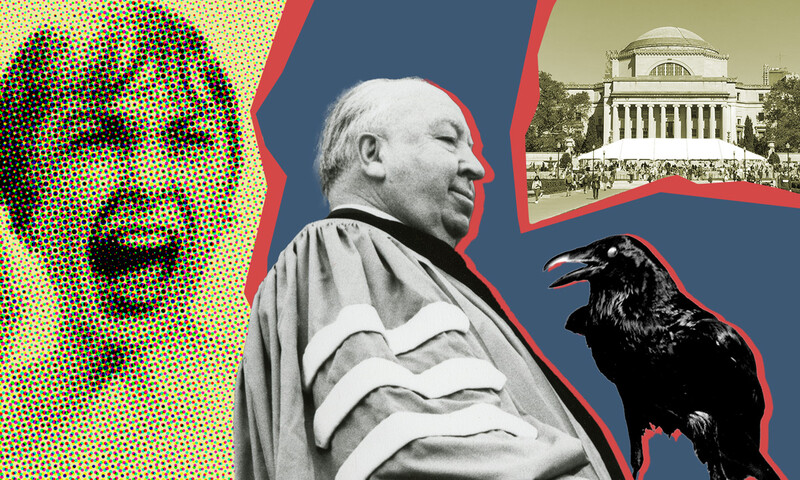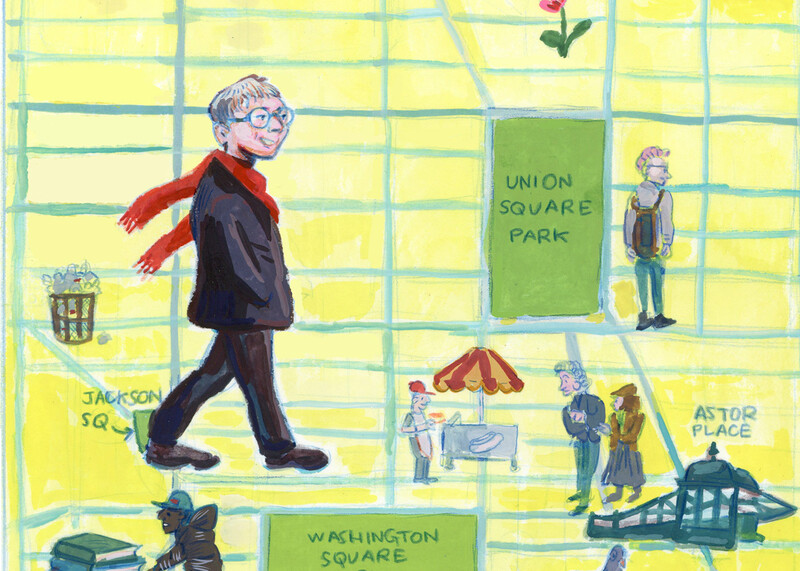On July 31, 2002, Bill Josephson ’55LAW sat in his downtown office at 120 Broadway. Just outside his third-floor window, he saw what he recalls as the leftover rubble of the World Trade Center. The burning odor of Ground Zero still poisoned the air. On Josephson’s desk was a minidisc recorder. Behind the desk was Josephson, and opposite him sat a man named Gerry Albarelli. As the machine ran, Albarelli spoke. “I’m talking to William Josephson,” he said,“about the events of September 11.” For the next several hours, Josephson, then head of the New York State Charities Bureau, answered Albarelli’s questions, giving a detailed account of his experiences on September 11 (“. . . and we had just hit Williams Street and all of a sudden, the black cloud came back and people were running and screaming”), and of the work performed by his agency in response to the disaster, as well as its dealings with other agencies, such as the Red Cross. Albarelli was acting neither as a detective, nor as a journalist, nor even as an author, though he is one. Rather, he had been dispatched to Josephson’s office by Mary Marshall Clark, an open, energetic, passionately inquiring woman, whose work at Columbia is deeply rooted in the process of asking questions and listening to stories.
In fact, she has made a science of it.
What’s True?
As a girl in Clarkton, North Carolina, Clark grew up in a culture and tradition in which storytelling played an important role. Her father would entertain her with tall tales, purportedly true stories that incorporate exaggeration and outright fiction. “It drove me crazy,” she says,“trying to figure out what was true and what wasn’t.” In 1965, at the age of 12, she bought a tape recorder and began interviewing the church ladies who lived on the white side of town. She wanted to know how these women could be Christians and yet not want black people to enter their churches. Most of the women responded to the question by ordering the young girl from their homes. But Clark, as it turned out, was only getting warmed up.
Now, as the director of the Columbia University Oral History Research Office (OHRO), Clark presides over the oldest and largest university-based oral history program in the world. Founded in 1948 by Pulitzer Prize–winning historian Allan Nevins, the oral history collection contains some 17,000 hours of recorded testimony by thousands of subjects. Some are ordinary witnesses to extraordinary events; most are prominent figures in the arts, business, politics, journalism, labor, law, literature, medicine, philanthropy, and the social and physical sciences. From Sherman Adams (an aide to President Eisenhower) to the sculptor William Zorach, from those involved in the Columbia crisis of 1968 to those caught up in the chaos of September 11, 2001, the taped interviews are supplemented by nearly 1 million pages of written transcripts. Each year, more than 2,000 researchers make use of the collection, which is open to the public.
As conceived by Nevins, oral history was “an elaborate replacement for diaries and correspondence,” says Clark, who teaches an oral history seminar through the history department, as well as a summer workshop. Unlike the oral history movement in England, which centered on the condition of the working class, Nevins subscribed to the “great person” approach to history, focusing on the lives of the elite — leaders in civic, business, and cultural life. Not only did this illuminate the effects of the individual on history, but by placing those voices against one another, Nevins gave researchers a body of material with which to explore the deeper contradictions in history, and, ultimately, in memory.
A Search for Meaning
“What we are really interested in is memory,” says Clark, drawing a line between oral history, which is memory-focused, and journalism, which is more concerned with events.“We’re very interested in facts and information as well,” she adds, “but in story form.” And unlike journalists, oral historians don’t ask leading questions and never take questions to an interview, but rather follow the trail of the story as it leads them, resulting in a narrative journey that is “much longer and complicated, and perhaps much richer.” Clark cites the work of Alessandro Portelli, an Italian professor of literature who is widely considered to be the most important oral historian working today. For his book The Death of Luigi Trastulli and Other Stories: Form and Meaning in Oral History, Portelli interviewed residents of a small Italian town and found something curious in his subjects’ 20-odd-year-old recollections. Trastulli, a young worker,was killed in 1949 during a largely forgotten political protest; yet many of Portelli’s subjects were sure that Trastulli had died in a 1953 demonstration prompted by massive factory layoffs that ravaged the community. In stark terms, the study evinces oral history’s implications for our understanding of objective reality.What is real? What is imagined, and why? How does memory work? What is the difference between facts and truth? What is the nature of subjectivity? Such questions — and often their answers — are woven into the fabric of the telling.As Clark puts it,“The way a story is told is a clue to its meaning.”
But it’s not just the way a story is told that provides the clue; it’s also the identity of the teller. The social upheavals of the 1960s and 1970s produced a new kind of narrator and changed our conception of history, Clark says.“We became more interested in voices coming from social struggles. There was an awareness of the importance, for example, of African Americans speaking about their own experiences of struggle — of the right to define their own struggle.We became interested in an understanding of subjectivity as belonging to the group as well as to the individual.”
In the 1980s, Clark’s predecessor at OHRO, Ron Grele, helped spearhead this broadening of oral history’s purview, which was mirrored elsewhere in academia by an increased focus on how social identities are constructed.“We are,” says Clark, “ruthlessly interested in identity.”
In adapting itself to societal and technological changes, oral history has seen its stock rise considerably in the academy.The insights to be gained by interpreting stories, analyzing their structure, and placing them in a particular context make oral history relevant to a wide array of disciplines. Literature is the most kindred branch, Clark says, but others, such as journalism, history, sociology, anthropology, public health, psychoanalysis, and even criminology, have a vital stake in what occurs when memory is rendered by speech.
Capturing the Moment
Three months into Clark’s directorship, the conventions of oral history were altered forever. In the hours following the attacks of September 11, 2001, Clark felt an urgent need to go into the field and elicit the voices of people who were directly or indirectly affected by what had happened, “before,” as she says, “the mass media and the government imposed their own version of events on the collective memory.”
The OHRO had never done this; normally, oral history involves recollections from the distant past. But Clark, though her department lacked adequate money and equipment, was determined to seize the opportunity. She called then provost Jonathan Cole to ask what he thought about using graduate students as volunteers, and to mention that the National Science Foundation (NSF) had issued a special request for September 11–related grant proposals. Cole gave the go-ahead for the volunteers and suggested that Clark collaborate with sociologist Peter Bearman, head of the Institute for Social and Economic Research and Policy at Columbia (ISERP), on writing a proposal for the NSF. Clark and Bearman submitted their application, and ISERP fronted the necessary funds to get the project started. Clark and her volunteers then fanned out across the city, gathering testimony that ranged across ethnic, national, class, gender, and generational lines — a departure from the elite in whom founder Allan Nevins was most interested.When grant money arrived from the National Science Foundation, the Rockefeller Foundation, and the New York Times Foundation, ISERP was reimbursed, and Clark’s team went on to collect hundreds of interviews over the next three years. The result, says Clark, is one of the largest interviewing projects on mass trauma in the world.
The Future of the Past
While the September 11, 2001 Oral History Narrative and Memory Project (which includes the Albarelli-Josephson interview) marked a departure from the traditional approach of oral history, various technological advances, from audio and video digitization to the Internet, have changed the way we receive it. In March 2006,OHRO unveiled a Web site called Notable New Yorkers, which offers audio recordings and transcripts of interviews with 10 influential New Yorkers of the past half century. The narrators include Bennett Cerf, founder of Random House; Frances Perkins 1910GSAS, America’s first female cabinet member (under Franklin D. Roosevelt); former New York City mayor Ed Koch; and psychologists Kenneth Clark ’40GSAS and Mamie Phipps Clark ’43GSAS, respectively, the first male and female African Americans to get their doctorates in psychology at Columbia.
With oral history in such a state of flux, Clark is as enthusiastic about the future as she is about the recorded past. “We’re building more oral history courses and expanding the summer institute and other training opportunities,” she says. “We also hope to do more work in contemporary history, including with the Center for Human Rights Documentation and Research [part of the Rare Book and Manuscript Library at Columbia] and with others at Columbia interested in documenting contemporary human rights abuses.”
In addition, she hopes to begin work on an institutional history of Columbia. By interviewing Columbia faculty and alumni — “people who have made significant contributions to the intellectual life of the University” — OHRO’s global vision would, by definition, expand, Clark suggests. “When you’re documenting Columbia,” she says,“you’re documenting the world.”


